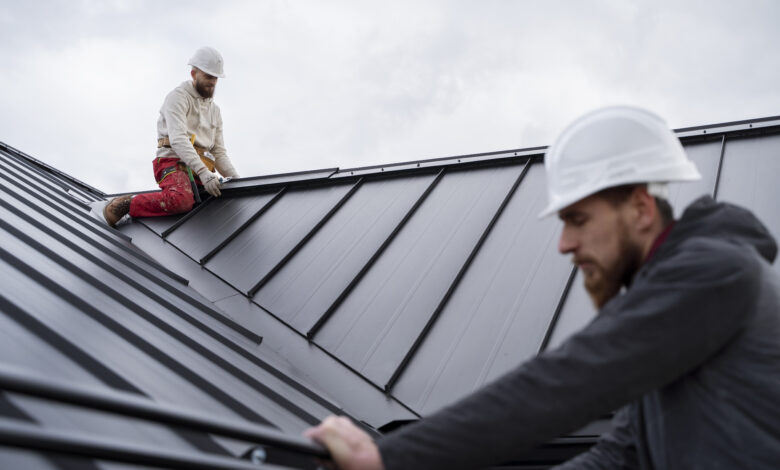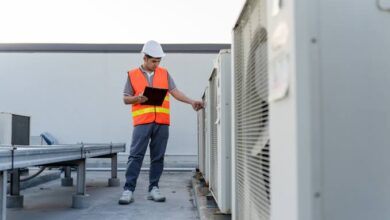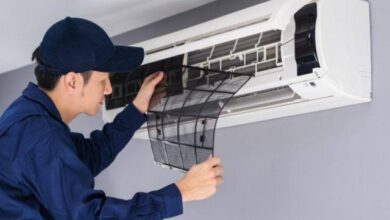The Pros and Cons of Different Roofing Materials

Choosing the right roofing material is one of the most significant decisions a property owner can make. A roof not only serves as the protective shield for a home or building, but it also influences energy efficiency, aesthetics, long-term value, and even property resale potential. Different roofing materials come with varying advantages and disadvantages, including cost, durability, environmental impact, and required upkeep. Some options are designed to withstand extreme weather, while others prioritize affordability or design appeal. Understanding the strengths and weaknesses of each choice helps ensure that the final decision aligns with both practical needs and personal preferences.
Comparing roofing options
Roofing materials range from traditional asphalt shingles to metal, clay, concrete, slate, and even modern synthetic alternatives. Asphalt shingles remain a common choice due to their affordability and ease of installation, but they often lack the longevity associated with higher-end options. Metal roofs, on the other hand, are highly durable and can last decades with minimal upkeep, though they typically require a higher initial investment. Clay and concrete tiles offer a striking, timeless appearance but are heavy, requiring reinforced structures to support their weight. Slate roofs are valued for elegance and long-lasting performance, though their cost makes them impractical for many households. Synthetic products, such as rubber or polymer blends, attempt to replicate premium aesthetics while maintaining a more accessible price point. To see how different styles look in real-world applications, homeowners often review completed works. It can be helpful to check our roofing projects to gain a better perspective before making a decision.
Asphalt shingles and their practicality
Asphalt shingles are among the most widely used materials due to their relatively low cost, straightforward installation process, and variety of styles and colors. They are versatile enough to match a wide range of architectural designs and provide adequate protection for regions with varying weather demands. However, their lifespan is often shorter than that of other materials, typically ranging from fifteen to thirty years, depending on the quality and climate. They are prone to damage from severe storms, and granule loss over time can lead to a reduction in effectiveness. While they are cost-effective in the short term, frequent replacements can add up in the long run. Another drawback is their environmental impact, as discarded shingles often end up in landfills. Yet for homeowners balancing affordability and appearance, asphalt shingles remain a logical option.
Strength and resilience of metal roofing
Metal roofing has gained popularity for its ability to resist harsh elements, including heavy rain, snow, and even wildfire sparks. It can last fifty years or more, making it a substantial long-term investment. Metal roofs also reflect sunlight, reducing heat absorption and contributing to lower energy bills in warmer climates. They come in a variety of finishes and styles, ranging from standing seam panels to designs that mimic shingles or tiles, offering flexibility in aesthetic appeal. Despite these benefits, metal roofs have a higher upfront cost compared to asphalt, and improper installation can lead to noise issues during rainfall or expansion problems due to temperature fluctuations. Homeowners considering this option must balance the initial expense with the extended durability it provides.
Clay and concrete tiles for visual appeal
Clay and concrete tiles are renowned for their striking look, often associated with Mediterranean, Spanish, or Southwestern architectural styles. Their weight makes them sturdy against high winds, and they provide natural resistance to fire and insects. With proper maintenance, these tiles can last several decades, often rivaling the durability of metal or slate. However, their heaviness can be a significant drawback, as not all buildings have the structural capacity to support them, requiring reinforcement that adds to the overall cost. They are also more brittle than other materials, which means that while they endure well against weather, foot traffic, or impact from debris, they can still cause breakage. For homeowners seeking visual distinction, tiles offer a blend of durability and aesthetic effects but at the cost of higher installation and repair expenses.
Slate and synthetic options
Slate roofing is often considered a pinnacle of elegance, with its natural stone composition providing an unmatched lifespan that can extend over a century. Its resistance to weather, fire, and pests makes it one of the most durable materials available. Yet slate is expensive, not only in material cost but also in installation, as it requires skilled labor due to its weight and handling challenges. On the other hand, synthetic options such as polymer composites and rubber-based tiles aim to replicate the appearance of premium materials like slate or wood while reducing weight and cost. They also tend to be more eco-friendly, often made from recycled materials. Although they are relatively newer and long-term performance is still being assessed, these alternatives offer homeowners a balance of style, affordability, and environmental consciousness.
Selecting the most appropriate roofing material involves weighing aesthetics, budget, longevity, and structural requirements. While asphalt shingles may serve well for those prioritizing affordability, metal roofs provide exceptional durability and energy efficiency at a higher upfront investment. Clay and concrete tiles offer distinct charm but demand structural reinforcement and careful maintenance. At the same time, slate stands out for its unmatched lifespan but is often beyond the financial reach of average homeowners. Synthetic products provide a middle ground, combining elements of style, durability, and affordability. Ultimately, the choice depends on the property owner’s unique priorities, the local climate, and long-term expectations for both function and appearance.



